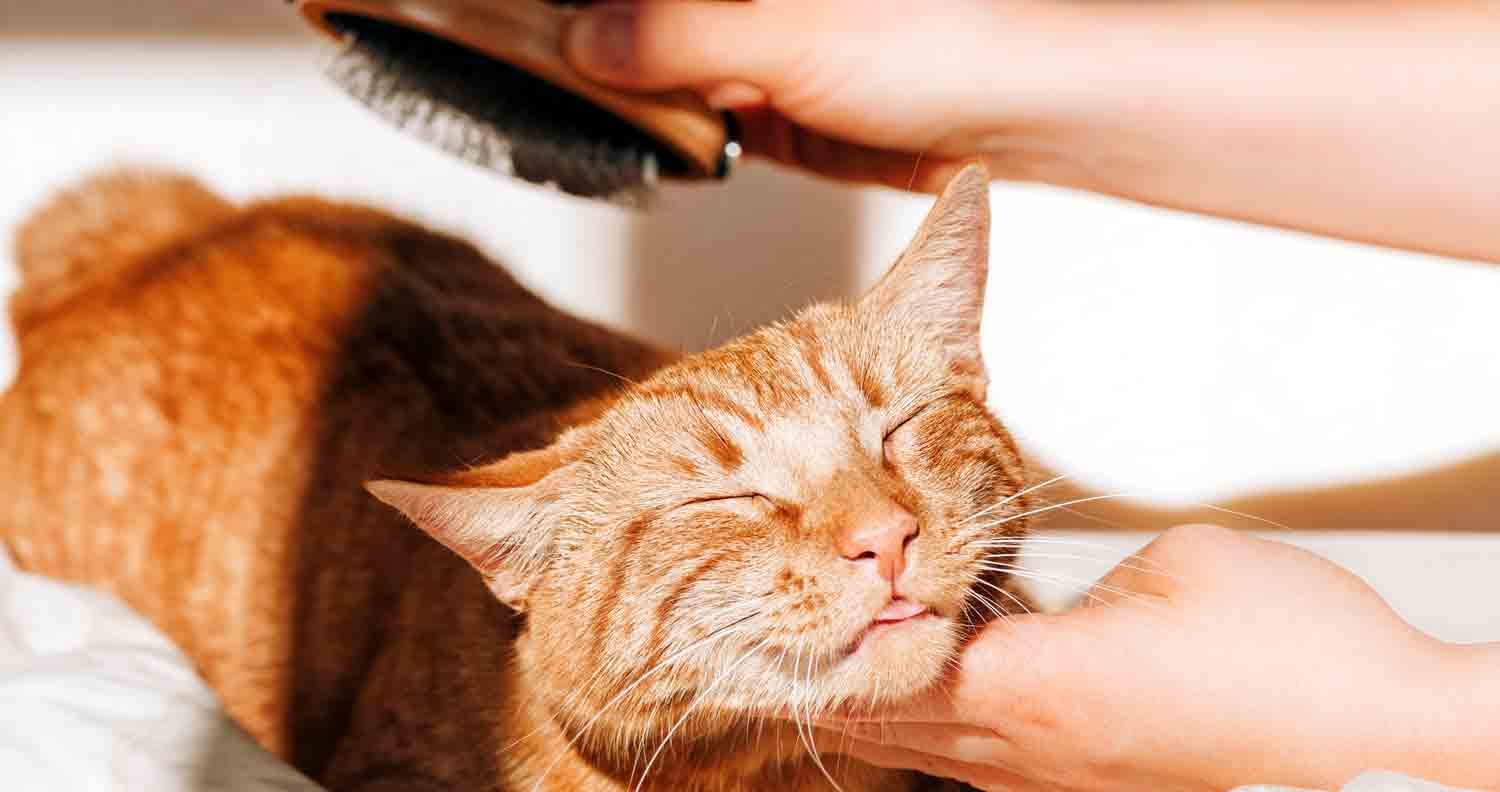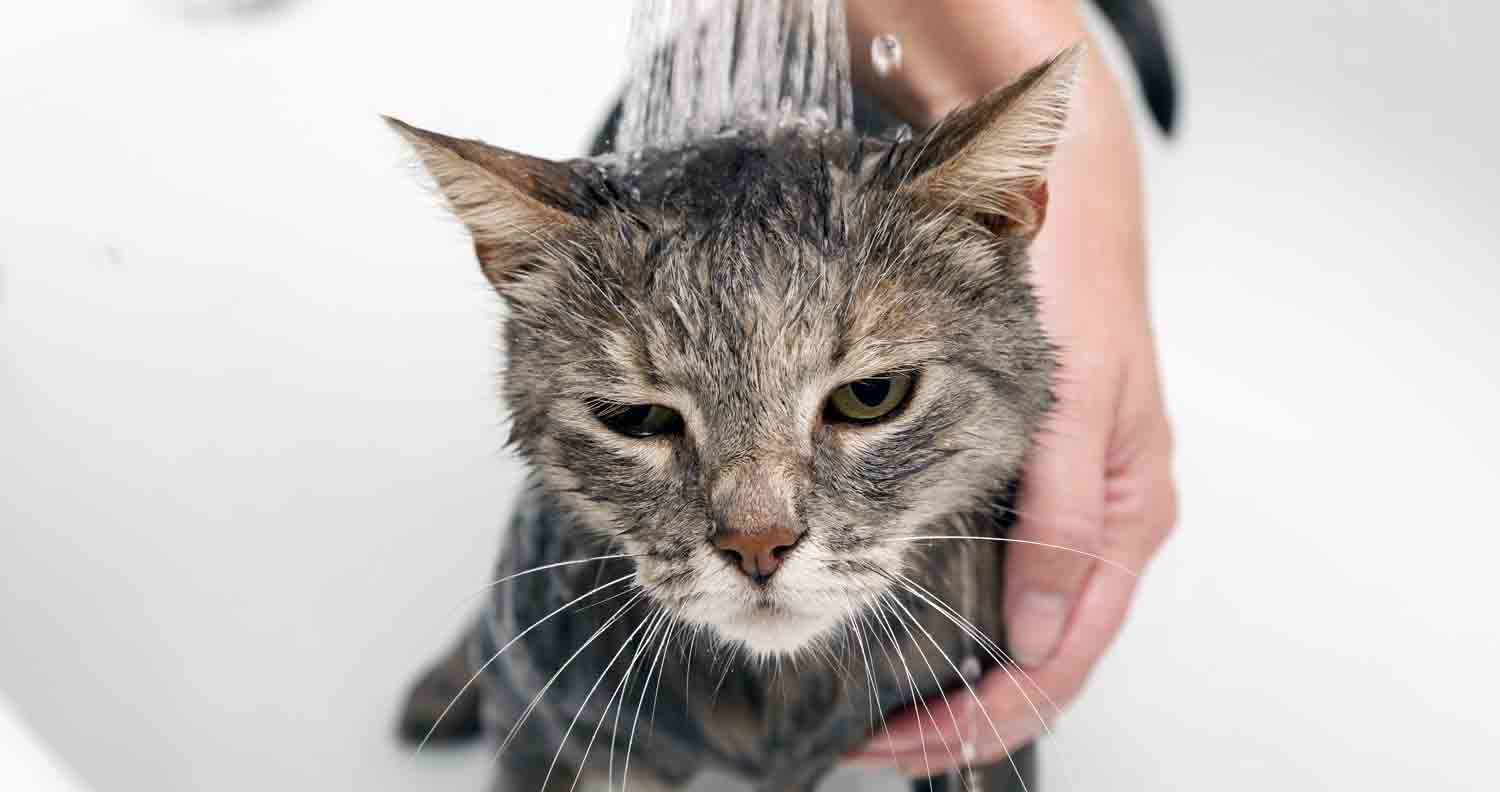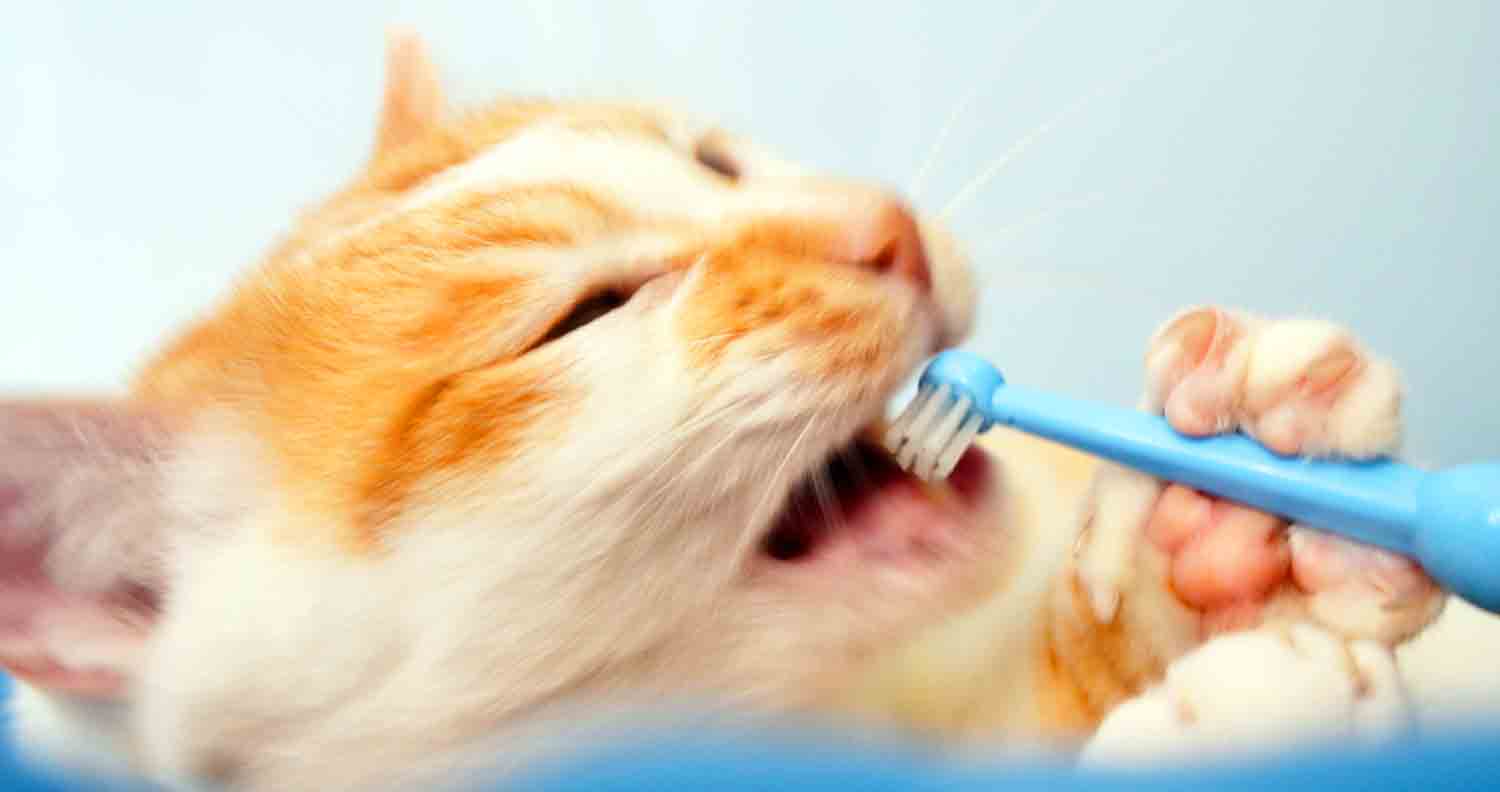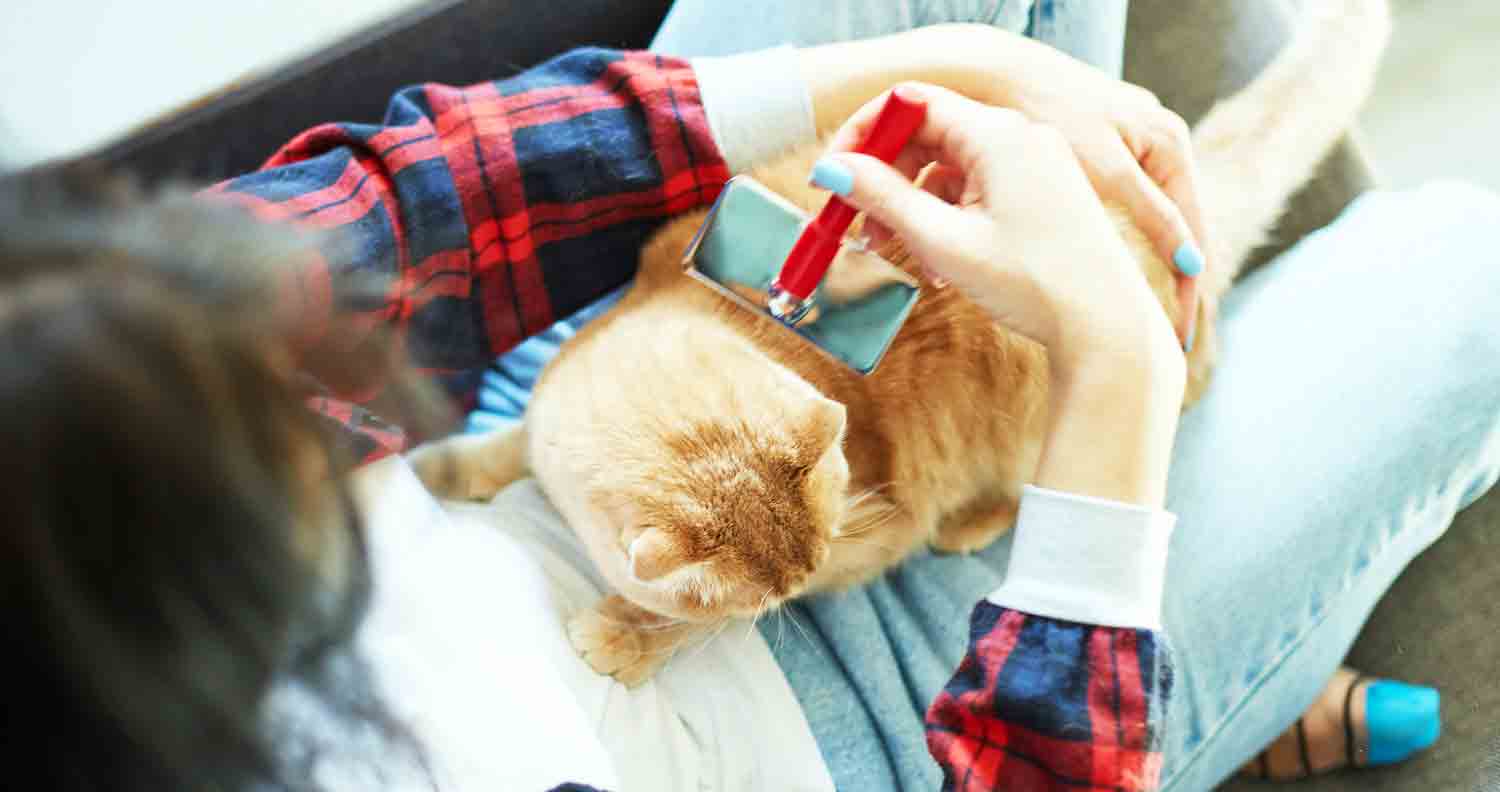How to Groom a Cat: An Introductory Guide
Share:

Cats take a lot of pride in their appearance and often devote a significant amount of time to grooming. However, that doesn’t mean you shouldn’t be on-hand to offer some grooming assistance from time to time. As much as your kitty loves looking after themselves, you may need to give them a helping hand with a little grooming support.
Learning how to groom a cat correctly is an important part of good pet care and support. Your kitty will appreciate your efforts to keep them looking and feeling their best. Plus, grooming is an important bonding experience for you and your feline friend.
The Benefits of Cat Grooming
Grooming has a number of benefits, starting with protecting the skin and fur of your cat, particularly if they have longer hair. Grooming your cat daily will keep their coat in better condition and provide them with the tools they need to look after their skin, reduce hygiene problems, and more. Grooming your cat helps to improve muscle tone and stimulate the production of skin oils.
Your cat will generally remove loose or dead hair and irritating skin cells when they’re grooming themselves, but you can brush daily to remove the remaining loose strands. You’ll also have an opportunity during this time to check your cat for any signs of problems, like fleas, ticks, ear mites, and so on.
If done correctly (and regularly), grooming is a valuable moment for you and your cat. It also helps to build a foundation for comfortable grooming as your cat gets older. After all, a lot of our older cat companions can end up with mobility issues later in life, which means they’ll be more reliant on you for grooming support.
How to Groom a Cat: Brushing
Brushing and combing are some of the simplest, and most important grooming strategies you’ll use. Brushing your kitty removes grease, dirt, and skin flakes while stimulating blood circulation to improve the overall condition of his or her skin.
Before you begin brushing, check your kitty’s coat. A healthy coat is naturally glossy, and there should be no bald patches or wounds to worry about. For short-haired cats, it’s best to carefully brush through the fur with a metal comb, getting rid of dirt and debris along the way. Concentrate on one section of their body at a time.
If you have long-haired cats, you’ll need more consistent grooming sessions every couple of days. Start by brushing the legs and abdomen with a good detangling comb. You can also sprinkle baby powder on tangles and knots to help remove them. Mat splitters are useful too.
During your regular grooming sessions, remember to check for any skin problems, or issues with cleanliness. Some long-haired cats can struggle with getting rid of all the waste around their rear end when they go to the bathroom.
If you do notice any skin problems, make an appointment with a vet to get them checked over. Rashes, spots, or even bald patches on the skin could be an indication of an underlying ailment or even a sign of stress. Your vet will be able to advise you on how to help your kitty’s coat stay healthy, and avoid any further skin conditions.

How to Groom a Cat: Bathing
After you’ve finished brushing and combing your cat, you can sometimes consider bathing him or her. Most of the time, your cat will be well-equipped to groom themselves, thanks to their clever tongues. However, if your cat gets into something sticky or smelly, or you notice problems with dirt, a bath could be a good idea. Some breeds of cats need bathing more than others and maybe the occasional trip to a professional cat groomer.
Schedule baths when your kitty is comfortable and relaxed. Tiring out your cat with a toy before you go into the bathroom is a good idea. You should also think about trimming your pet’s claws, for your own protection. Add a rubber bathmat to the tub where your cat will be bathing to keep them from slipping and use a handheld spray hose to gently wet your cat’s fur.
Keep water away from your cat’s ears, eyes, and nose where possible, and use a solution specifically designed for cats as a shampoo. Remember, human soap isn’t good for your kitty. Lather the fur carefully, and thoroughly rinse away the soap when finished. You can then wrap your cat in a large towel to help her dry, or simply give her a warm space somewhere in the house where she can avoid being disturbed for a while.

Get 30% off and FREE shipping on cat food!
U.S.A. only
To Find out why we recommend chewy.com, click here
Give your kitty space after bathing – she may not be happy with you. Get some treats ready and provide plenty of positive reassurance when your cat needs it. If your kitty has trouble getting herself or himself dry, you can consider using a hairdryer on its lowest, coolest setting to help. However, many cats won’t like the noise this makes, so be careful.
How to Groom a Cat: Trimming claws
Looking after your cat's paws can be a complicated event. To say the least!
Before you do anything, check if your cat’s claws really need trimming. You can sometimes get away without cutting them if your kitty uses his or her scratching post often enough. Get into the habit of checking your cat’s claws regularly, looking for any signs of damage or ingrown nails.
If you’re trimming your cat’s claws for the first time, you can often get assistance from a vet. Make sure that you know how to clip the nails properly, and carefully. To get the nail ready for cutting, gently press your finger into the pad of the paw to unsheathe the claw. Do not use scissors or human clippers. Specially designed cat nail clippers are much safer for your cat.
Trim the very end of your cat’s nails only and avoid going near the sensitive part in the center of the claw. If you nick the quick with your clippers, your cat will bleed, and be in a lot of pain, so be cautious. When you check your cat’s claws, make sure you check on paw health too.
Healthy paws should be clean, and free from any scrapes or cuts. If you notice any wounds, swelling, splinters, or blood, there may be a problem you need to see your vet about. If your cat goes outdoors, be extra cautious to moisturize the paws when it’s particularly hot or cold outside.
If you notice any problems with your cat’s claws, such as overgrowth or calcification, speak to your vet. You may need to take additional steps to groom his or her paws and claws if a condition is present. Sometimes, it’s possible to get a groomer to assist with trimming too.
How to Groom a Cat: Brushing teeth
This may not be something you need to worry about too often, depending on your cat's dental hygiene. Brushing your cat’s teeth may be helpful if you’re concerned about an abnormally strong case of bad breath, or you’ve noticed the plaque on your kitty’s fangs before.
To check your cat’s teeth, gently push back his lips when he’s facing you, and examine the gums. They should be pink and firm, not white, red, or puffy. The teeth should be clean, (no brown or yellow stains), and strong.
Loose teeth, excessive drooling, ulcers, dark red lines on the gums, and difficulty chewing are all signs of potentially problematic issues with your cat’s teeth.
Take your cat for a veterinary examination if you notice signs of inflammation. Remember that teeth problems and gum disease can worsen very quickly if not left untreated. Plaque and bacteria on your cat’s teeth can also cause gingivitis and tooth loss. To brush your cat’s teeth, get a very small baby toothbrush with soft bristles.

You can get special feline toothpaste online or from pet stores, or you can use saltwater. Ask your vet for guidance if you’re not sure which supplies to use.
To get your kitty used to teeth brushing, start very slowly. Massage your cats’ gums carefully with your fingers, and put small amounts of cat toothpaste in her mouth over time to get them used to the taste. You can eventually introduce a small toothbrush without any toothpaste to get your kitty used to the initial experience, then apply toothpaste when your cat seems comfortable.
How to Groom a Cat: Eye care
Grooming your cat also involves keeping a close eye on her vision. An occasional home eye examination can clue you in to potential problems which may be developing within your cat’s eyesight. To check your kitty’s eyes, place your cat in a brightly lit area and examine her eyes. The eyes should be bright and clear, with white areas around the eyeball. Pupils should always be equal in size on both sides.
If you can gently roll down your cat’s eyelid, you should be able to see pink skin with no redness, whiteness, or discharge. Occasionally wiping away crusty gunk from the corners of your cats’ eyes can help a lot with his or her grooming strategy. Wipe from the corner of the eye away and use a fresh cotton ball every time you swipe.
If you notice something wrong with your cat’s eyes, the most important thing you can do is speak to a vet. Problems like discharge, watering, tear-stained fur, closed eyes, or changes in eye color can all indicate an impending problem. If your cat refuses to open her eye properly or is constantly trying to wash the area, this is a common sign that something is wrong.
If you’re not able to examine your kitty’s eyes on your own (some pet owners won’t be able to manage), but you notice signs of distress, seek a vet’s advice just in case. Most eye problems are easy enough to overcome with the right ointments and treatments. However, problems can quickly worsen and put your cat’s vision at risk if they’re ignored.
How to Groom a Cat: Ear care
Now we’ve got the eyes out of the way; you can begin to work on your cat’s ear care. Your feline friend has some sensational ears, capable of picking up the sound of her treats being opened from across the house. However, just like any ears, kitty ears can use some help staying clean at times. After all, your cat can’t wash his or her ears as well as we humans can.
To ensure your kitty’s ears stay in primed conditions, look at the outer ear to begin with. There should be a thin layer of hair on the outer surface with no bald areas or scratches. The inner section of the ear should be clean and light pink in color, with no redness, swelling, or discharge.
If you want to conduct an inner ear check, make sure you do so in a quiet room where no other animals or family members can disturb her. Your cat is likely to be a little uncomfortable about you touching her ears. If you can, fold the ear back slightly and look into the canal with plenty of light. A healthy inner ear should be pale pink and have minimal earwax. If you detect a strange odor or see a lot of discharge and wax, speak to a vet.
While you can clean your cat’s ears yourself with cotton wool and a cat ear cleaner at home, it’s best to get advice from your vet first. Cleaning an ear involves carefully folding your kitty’s ear back and wiping away any dirt and wax. You shouldn’t be trying to probe anything into your cat’s ear canal, as this can cause infection or damage. Just clean the upper area of the ear, and speak to a vet about the rest.
If you can’t see any signs of issues with the ear, but your cat is sensitive to touch around the ear, constantly tilting or shaking their head, or struggling with balance, this could be a sign something is wrong. Yellow or dark brown discharge is also a bad sign, as is your cat persistently trying to scratch at the ear.

Grooming Your Cat: Addressing Your Cat’s Needs
The amount of grooming you need to do to look after your cat will often vary depending on a range of things. For instance, if you have a long-haired kitty, you might need to trim the fur around their rear end occasionally to help keep the space hygienic. You could also look into things like de-matting tools to assist with knots when they appear. Many pet owners go to a professional to get long-haired cats groomed.
If your cat has a special skin condition, you may also need to use things like serums and balms to help look after him or her. Your vet will often be able to give you some guidance on how to look after your feline friend correctly.
Remember, start grooming at an early age so you can get your kitty used to the experience if possible. In general, it’s much easier to begin grooming when your cat is a kitten, and you can even introduce them to things like bathing and teeth brushing at this time too. The more you commit to properly grooming your cat, the easier it will be to detect any skin or health problems that your feline friend might have.
Additionally, regular grooming means that your cat will feel more comfortable around human beings and fill your home with less leftover loose hair. You might even be able to keep hairballs at bay if you’re cautious about the way you groom. This is a great way to protect your kitty’s digestion and look after the furniture around your home too.
If you ever have any concerns about your cat’s specific needs because of its breed, age, or conditions, your vet will be able to offer guidance. You can also ask for help from a professional groomer if you’re unsure about anything.
Make the Most of the Grooming Experience
Grooming your cat correctly can feel a little tricky at first. Cutting nails, brushing fur, and even giving baths isn’t always easy. Some cats respond better to grooming attempts than others. If your cat hates brushing or refuses to sit still for a nail trim, then it’s going to be more difficult for you.
There are ways you can reduce the stress of the grooming experience. For instance, allowing your cat time to get used to the tools you’re using, like the brush or the toothpaste for oral care, rather than diving in too quickly is a good idea. Plenty of treats, praise and reassurance are also helpful, so make sure you’re prepared to support your kitty.
Try not to get too impatient, regardless of how much your cat is driving you mad by refusing to stay still. If you have too many issues with grooming and you know your cat needs extra help, consider speaking to a professional groomer. Although getting a groomer involved will cost you more, it can be worth it if it saves both you and your kitty some stress.

Get 30% off and FREE shipping on cat supplies!
U.S.A only
To Find out why we recommend chewy.com, click here
Affiliate disclosure : We Love Cats and Kittens is a participant in several affiliate programs including the Amazon Services LLC Associates Program, and the Chewy affiliate program. These are affiliate advertising programs designed to provide a means for sites to earn advertising fees by advertising and linking to products on their sites. If you click on links in our blog posts and articles we may be paid a commission.
Share:

